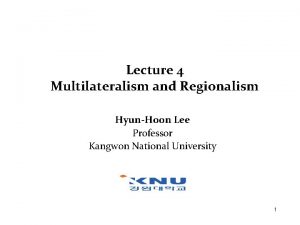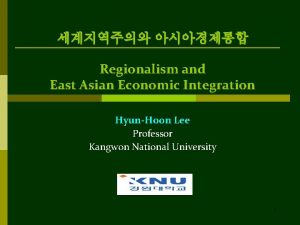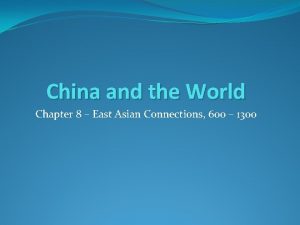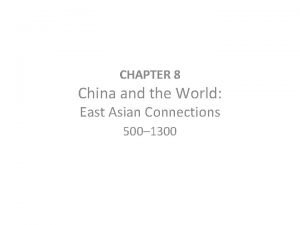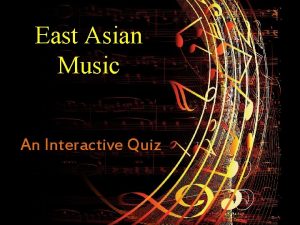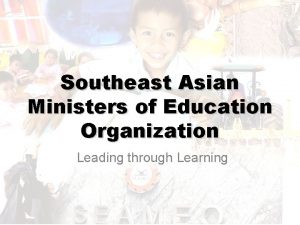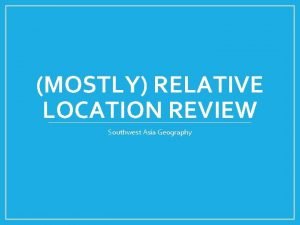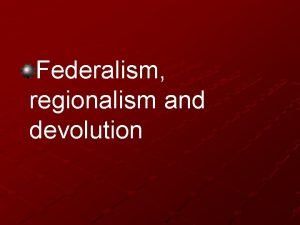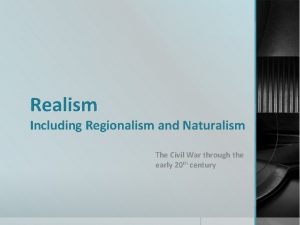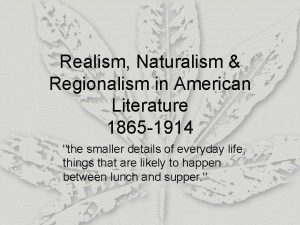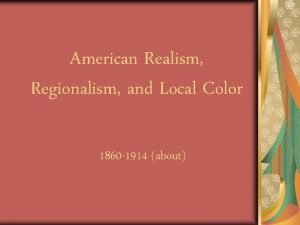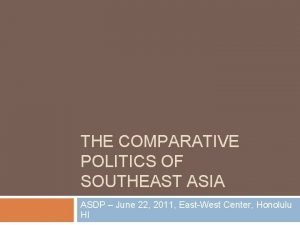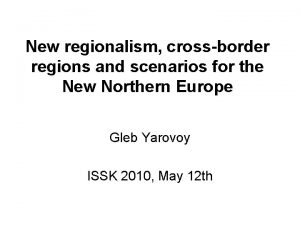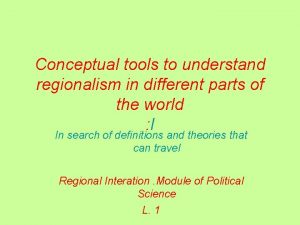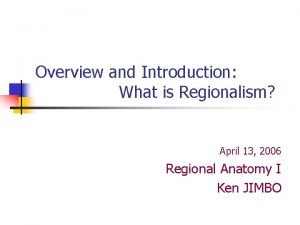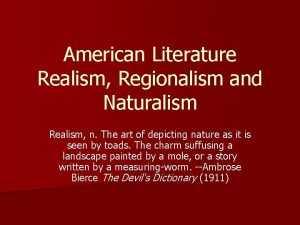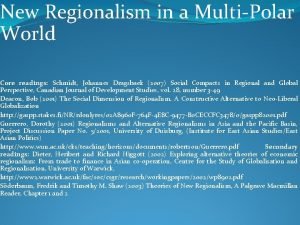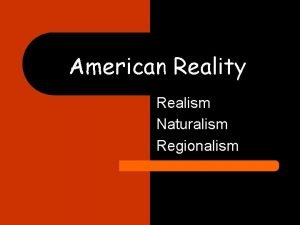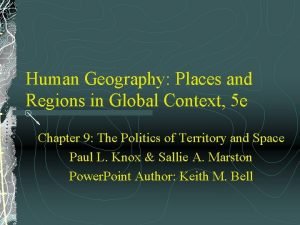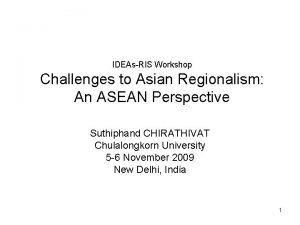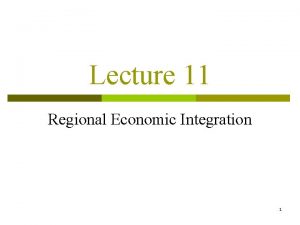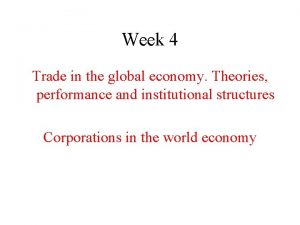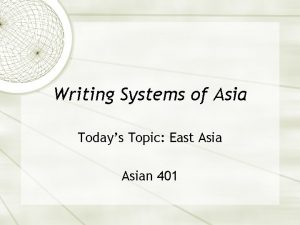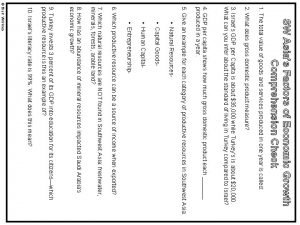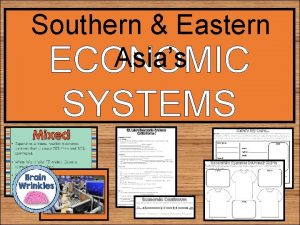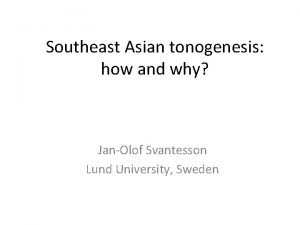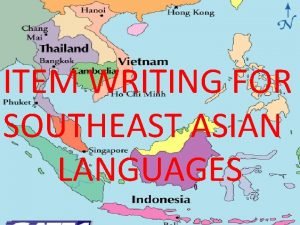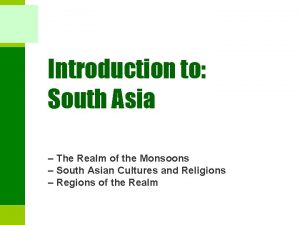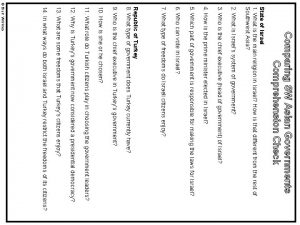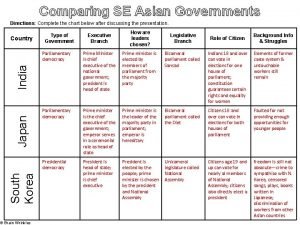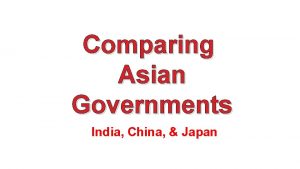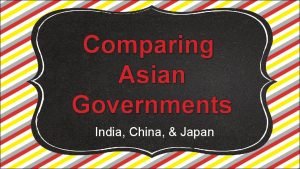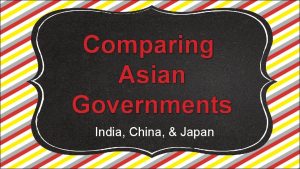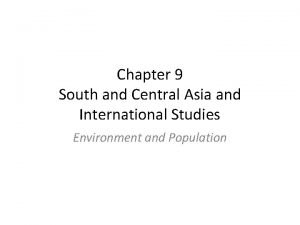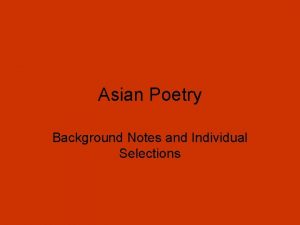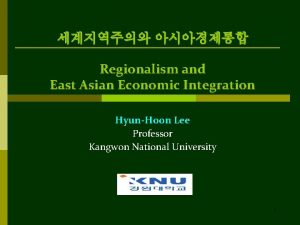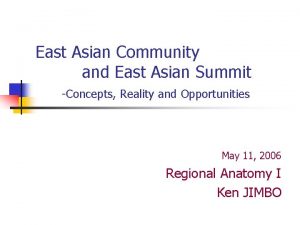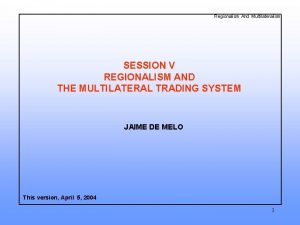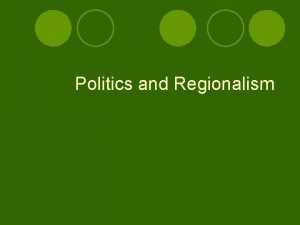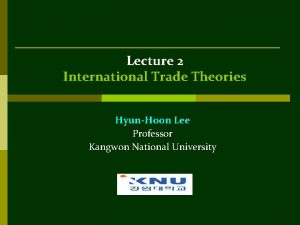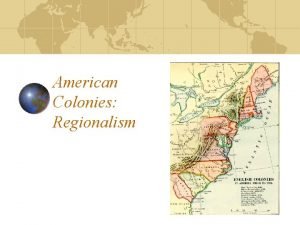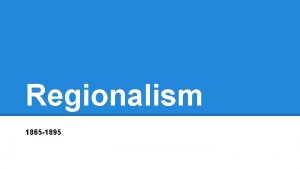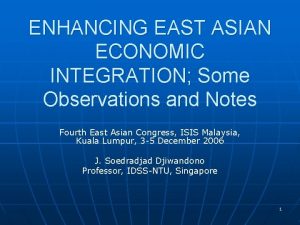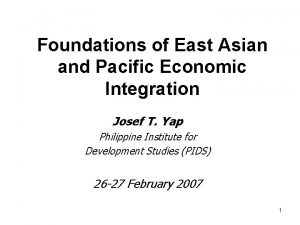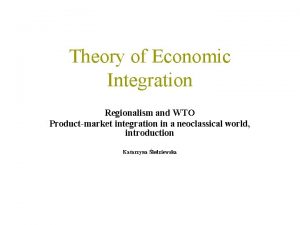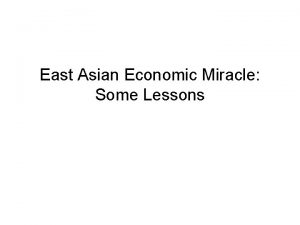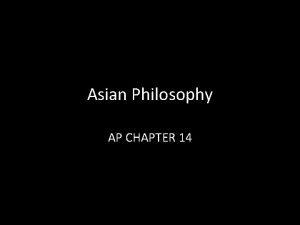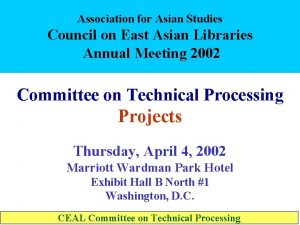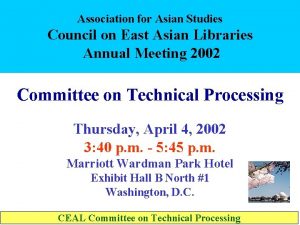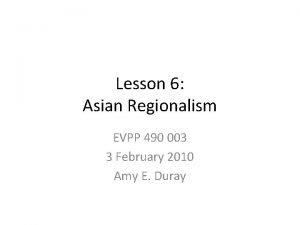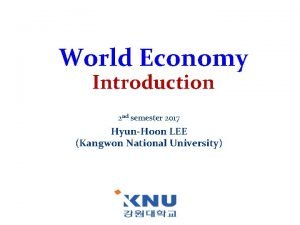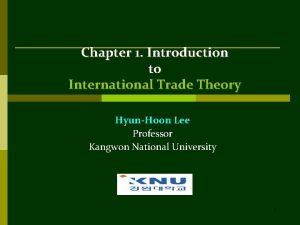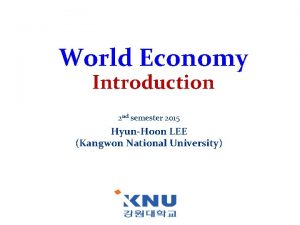Regionalism and East Asian Economic Integration HyunHoon Lee






















































- Slides: 54

세계지역주의와 아시아경제통합 Regionalism and East Asian Economic Integration Hyun-Hoon Lee Professor Kangwon National University 1

Hyun-Hoon Lee q Professor, Faculty of Economics and International Trade, Kangwon National University, Korea - Current q Dean, Asia-Pacific Cooperation Academy, Kangwon National University, Korea q Senior Analyst, Asia-Pacific Economic Cooperation (APEC) Secretariat q Senior Environmental Affairs Officer, United Nations Economic and Social Commission for Asia and the Pacific (UNESCAP) q Visiting Professor, University of British Columbia, Keio University, University Melbourne, Bank of Korea, etc. q Ph. D. in Economics, University of Oregon http: //cc. kangwon. ac. kr/~hhlee/ 2


Contents 1. International trade: a review 2. Multilateralism 3. Regionalism 4. Major regional blocs 5. Future of East Asian economic integration 6. Epilogue 4

1. International Trade: a review ■ Trend of world trade Source: The Economist, 201 u.

1. International Trade: a review ■ Trend of world trade Source: WTO, World Trade Statistical Review 2016.

Source: WTO, World Trade Statistical Review 2017.

1. International Trade: a review ■ Trend of Korea’s trade Source: Bank of Korea

1. International Trade: a review ■ What are the Reasons for Fast Expansion of International Trade?

1. International Trade: a review ■ What are the Reasons for Fast Expansion of International Trade? o Liberalization of Trade § GATT/WTO § Economic Integration o Development of Transport § Sea Transport § Air Transport o Development of Telecommunication § Telephone § Internet

1. International Trade: a review ■ What are the Reasons for Fast Expansion of International Trade? Container shipping dramatically reduced shipping costs making it much easier and cost effective to ship world-wide.

1. International Trade: a review ■ What are the Fundamental Reasons for International Trade? o Comparative advantage § Difference in technology - David Ricardo § Difference in factor endowments – Heckscher-Ohlin Inter-industry trade o Economies of scale and product differentiation § Economies of scale § Product differentiation Intra-industry trade

1. International Trade: a review ■ What are the Consequences (Benefits and Costs) of International Trade? ü Benefits of International Trade ü Costs of International Trade

1. International Trade: a review ü Benefits of International Trade o Individuals § Consumption of better quality products with lower prices § Consumption of diverse products o Firms § Greater business opportunities § Greater profit o Nation § Fast economic growth § Job creation

1. International Trade: a review ü Costs of International Trade o Individuals § Loss of jobs employed in less competitive industries o Firms § Face stronger competition and may lose competitive edge o Nation § Greater income disparity § Possibility of environmental degradation in developing countries § Greater vulnerability to foreign shocks

1. International Trade: a review ü Net Benefit of International Trade o Firms § Greater business opportunity but may lose competitive edge o Individuals § As consumers, individuals become better off, but as workers, individuals may become worse off. o Nation § Overall national welfare becomes greater, but the nation may face the problems of income disparity, environmental degradation, etc.

1. International Trade: a review ■ Who are the major trade partners? p Gravity Model n Bilateral trade between two countries is positively related to the product of the two countries’ GDPs and negatively related to the distance between the two countries. n That is, the larger the two countries’ GDPs and the closer two countries are, the larger the volume of trade between them is expected to be. n Implications:

1. International Trade: a review ■ What are the major trade policies? ü Free trade vs. non-free trade ü Tariff and non-tariff barriers ü Multilateralism vs. regionalism

2. Multilateralism The World Trade Organization (WTO) p General Agreement on Tariffs and Trade (GATT) n A multilateral agreement whose purpose was the "substantial reduction of tariffs and other trade barriers and the elimination of preferences, on a reciprocal and mutually advantageous basis. " n Signed by 23 nations in 1947 and took effect in 1948. n There were eight rounds of multilateral negotiations, focusing mostly on tariff rate cuts, except the last round (Uruguay Round) n Lasted until 1994 and was replaced by the World Trade Organization (WTO) on January 1, 1995. n The original GATT text (GATT 1947) is still in effect under the WTO framework, subject to the modifications of GATT 1994.

2. Multilateralism The World Trade Organization (WTO) p The Uruguay Round n n n GATT’s eighth round of negotiations, with 123 countries participating. Began in September 1986 with completion scheduled for December 1990. Disagreements between United States and European Union, on reducing agricultural subsidies, delayed conclusion for three years. Concluded with the signature by 123 nations in Marrakesh on April 14, 1994. Agreement took effect in July, 1995.

2. Multilateralism The World Trade Organization (WTO) p Results of the Uruguay Round: n n n Established rules for monitoring protectionism and reversing the trend. Brought services, agriculture and foreign investments to international rules. Agreed also on international rules for protection of intellectual property rights. Stronger and more efficient rulings on dispute settlements. Established the WTO in place of the GATT Secretariat.

2. Multilateralism The World Trade Organization (WTO) Source: WTO, World Trade Annual Report 2017. Source: WTO, World Trade Statistical Review 2017.

2. Multilateralism The World Trade Organization (WTO) p Doha Round n Launched in November, 2001, in Doha, Qatar. n The Round is also known as the Doha Development Agenda as a fundamental objective is to improve the trading prospects of developing countries. n Agenda included: Further liberalization of production and trade in agriculture, industrial products, and services. p Further tightening of antidumping regulations, investment and competition policies. p

2. Multilateralism The World Trade Organization (WTO) p Doha Round n Developing nations are reluctant to make concessions because of feeling that Uruguay Round failed to deliver on promises. n Developing nations insisted on making Doha Round a true “development round”. n Intended to conclude by end of 2004, all but collapsed in 2008 over disagreements over agricultural subsidies between developed and developing nations. n Its future remains uncertain.

3. Regionalism p In the period 1948 -1994, the GATT received 124 notifications of RTAs (relating to trade in goods), and since the creation of the WTO in 1995, over 400 additional arrangements covering trade in goods or services have been notified. Source: WTO Secretariat (https: //www. wto. org/english/tratop_e/region_e/regfac_e. htm)

3. Regionalism Economic Integration p Economic integration refers to the commercial policy of discriminatively reducing or eliminating barriers only among the nations joining together.

3. Regionalism Economic Integration n Free trade areas n Removes all barriers to trade among members, but each nation retains its own barriers to trade with non-members. n Examples: n n European Free Trade Association (EFTA), 1960, between United Kingdom, Austria, Denmark, Norway, Portugal, Sweden and Switzerland North American Free Trade Agreement (NAFTA), 1993, between the United States, Canada and Mexico

3. Regionalism Economic Integration n Customs union n Removes all barriers to trade among members and harmonizes trade policies toward the rest of the world. n Example: n European Community (EC), 1957, between West Germany, France, Italy, Belgium, the Netherlands, and Luxembourg.

3. Regionalism Economic Integration n Common market n Removes all barriers to trade among members, harmonizes trade policies toward the rest of the world, and allows free movement of labor and capital among member nations. n Example: n European Community (EC) achieved common market status in 1993.

3. Regionalism Economic Integration n Economic union n Removes all barriers to trade among members, harmonizes trade policies towards the rest of the world, allows free movement of labor and capital among member nations, and unifies monetary and fiscal policies of members. n Examples: n n Benelux, formed after World War II between Belgium, the Netherlands and Luxembourg European Union (EC)

3. Regionalism Static Effects of Economic Integration 1. Trade creation effects vs. trade diversion effects. 2. Spaghetti bowl effects. 3. Administration savings from elimination of customs officers, border patrols, and others. 4. Reduction in demand for imports from rest of the world will likely lead to improvement in collective terms of trade of member nations. 5. By acting as a single unit, customs union will likely have more bargaining power than members separately.

3. Regionalism Dynamic Benefits of Economic Integration 1. Increased competition, leading to greater efficiencies and technological improvements. 2. Economies of scale from the enlarged market. 3. Stimulus of investment to take advantage of enlarged market, and to meet increased competition. 4. Better utilization of community resources as labor and capital move freely (assumes common market).

4. Major trading blocs p EU (European Union) p NAFTA (North American Free Trade Agreement) p ASEAN (Association of South East Asian Nations) p MERCOSUR (Mercado Comun del Condo Sur, South Common Markets) p TPP (Trans-Pacific Partnership)? p RCEP (Regional Closer Economic Partnership)? p FTAAP (Free Trade Area of Asia and the Pacific)?

4. Major trading blocs p The European Union (EU) n 1958 – established common external tariff (Customs Union) n 1968 – Achieved free trade in industrial goods within EU, and common price for agricultural goods n 1970 – Reduced restrictions on movement of labor and capital n 1993 – Removed all remaining restrictions on flow of goods, services and resources, becoming largest trade bloc in the world (Common market) n 1999 –Began to use the common currency, Euro among 19 members out of 28 EU member states (Monetary union) n 2016 – Brexit: UK will leave EU (Leave won by 52% to 42% in a referendum on June 23, 2016)

The European Union (EU)

4. Major trading blocs p The North American Free Trade Agreement (NAFTA) n 1994 – formed by United States, Canada and Mexico, to eventually lead to free trade in goods and services over entire North American area. p n Also phased out many other barriers to trade and reduced barriers to cross-border investments among the three member nations. 2017 - Under Donald Trump’s presidency of the United States, a renegotiation has started. p Trump tweeted that it was the “worst trade deal ever made” and “may have to terminate? ”

4. Major trading blocs p The Southern Common Market (Mercosur) n Argentina, Paraguay, Brazil, and Uruguay in 1991, and Venezuela (joined in 2012 but suspended in Dec. 2016). n Associate members are Bolivia and Chile (1996), Peru (2003), Columbia, and Ecuador n It is now a customs union. Salvatore: International Economics, 11 th Edition © 2013 John Wiley & Sons, Inc.

The Southern Common Market (Mercosur)

4. Major trading blocs p Association of South East Asian Nations (ASEAN) n Formed in 1967 by Indonesia, Malaysia, the Philippines, Singapore, and Thailand. n 10 members: Brunei, Darussalam, Cambodia, Indonesia, Laos, Malaysia, the Philippines, Singapore, Thailand, Vietnam n Primarily a political association, but began in 1977 to move toward a common market, with a little success. n ASEAN Free Trade Area (AFTA) agreement was signed in 1992.

Association of South East Asian Nations (ASEAN)

p Association of South East Asian Nations (ASEAN) n ASEAN has been a platform for Asian integrations and cooperations. n In 1990, Malaysia proposed the creation of an East Asian Economic Caucus composed of ASEAN members as well as China, Japan, and South Korea. p n In 1997, ASEAN Plus Three was created and in 2000, the Chiang Mai Initiative was established. p n It failed because of heavy opposition from the U. S. and Japan. Asian Currency Unit (ACU) was proposed. In 2005, East Asia Summit (EAS) was established among ASEAN Plus Three as well as Australia, New Zealand, and India (known as ASEAN Plus Six). p The Regional Comprehensive Economic Partnership (RCEP) is currently under negotiations. (arguably as a first step toward building Asian Economic Community).

4. Major trading blocs

5. Future of East Asian Economic Integration p Trans-Pacific Partnership (TPP) n 12 countries among 21 APEC members. n Largest trading block in terms of GDP (40% of world GDP). n US, Japan, Australia, New Zealand, Canada, Mexico, Malaysia, Vietnam, Singapore, Brunei, Chile, and Peru. n Final agreement signed on February 4, 2017. n US exit on January 30, 2017 n The other 11 TPP countries agreed in May 2017 to revive the deal without US participation

Trans-Pacific Partnership (TPP) https: //ustr. gov/tpp/

5. Future of East Asian Economic Integration p Regional Comprehensive Economic Partnership (RCEP) n 16 countries: ASEAN Plus Six n Largest trading block in terms of population (3. 4 billion, 46% of world population). n Negotiations started in November 2012 at the ASEAN Summit in Cambodia and is scheduled to be finalized in 2017. n The 19 th round of RCEP negotiations was held in July in India.

5. Future of East Asian Economic Integration p Regional Comprehensive Economic Partnership (RCEP) 출처: 라미경, 김재국, “역내포괄적경제동반자협정(RCEP)의 추진현황과 시사점”, KIEP 오늘의 세계경제, 2017. 2. 15

Regional Comprehensive Economic Partnership (RCEP) Source: Wikipedia



5. Future of East Asian Economic Integration p Free Trade Area of Asia and the Pacific (FTAAP) n Proposed by Asia-Pacific Economic Forum (APEC). n APEC, established in 1989, is a regional form comprising of 21 economies located in Asia and the Pacific, including Russia. n In 1993, the first APEC Economic Leaders’ Meeting was held in Seattle, U. S. n In 1994, the Bogor Goals was adopted for free and open trade and invest in the Asia-Pacific by 2010 for industrialized economies and by 2020 for developing economies. In 2006, the concept of FTAAP was first discussed at its summit. n p This idea was first proposed by a Japanese economist, Kiyoshi Kojima in 1966. p Fred Bergsten, a U. S. economist, advocated the FTAAP in 2006. p In 2014 APEC leaders agreed to launch “a collective strategic study” on the FTAAP. p The realization of FTAAP may take many, many years.

5. Future of East Asian Economic Integration APEC (FTAAP) Hong Kong, PNG, Russia, Chinese Taipei RCEP India China, Korea ASEAN Cambodia Laos Myanmar Indonesia Philippines Thailand TPP Australia Japan, NZ Brunei Malaysia Singapore Vietnam Note: Countries in red are those with which Korea has signed an FTA. Chile Peru NAFTA Canada Mexico U. S.

5. Future of East Asian Economic Integration

6. Epilogue – Questions for Review 1. Do we need an East Asian Community (EAC)? Discuss it from the perspectives of Korea (and East Asia) 2. What would be the ideal coverage of membership for an EAC? 3. What would be the ideal procedure of forming an EAC? 4. What would the consequences of having an EAC in Asia?

Hyun-Hoon Lee hhlee@kangwon. ac. kr
 Hyunhoon
Hyunhoon Hyunhoon
Hyunhoon China and the world east asian connections
China and the world east asian connections Chapter 8 china and the world east asian connections
Chapter 8 china and the world east asian connections How is chinese music described a. it is gentle and lyrical
How is chinese music described a. it is gentle and lyrical Southeast asian ministers of education
Southeast asian ministers of education Relative location of israel
Relative location of israel East is east and west is west
East is east and west is west Difference between regionalism and federalism in a sentence
Difference between regionalism and federalism in a sentence Realism regionalism and naturalism
Realism regionalism and naturalism American regionalism literature
American regionalism literature Regionalism definition literature
Regionalism definition literature Regionalism and local color
Regionalism and local color Horizontal movement of air
Horizontal movement of air Laissez faire theory
Laissez faire theory Forward integration and backward integration
Forward integration and backward integration Make or buy continuum
Make or buy continuum Simultaneous integration examples
Simultaneous integration examples State to state regionalism
State to state regionalism New regionalism
New regionalism New regionalism
New regionalism Regionalism def
Regionalism def What is regionalization
What is regionalization Desiree's baby vocabulary
Desiree's baby vocabulary Regionalism literature characteristics
Regionalism literature characteristics The new regionalism
The new regionalism Regionalism literature definition
Regionalism literature definition Regionalism definition ap human geography
Regionalism definition ap human geography Regionalism literary movement
Regionalism literary movement Impressionism vs naturalism
Impressionism vs naturalism Examples of challenges of regionalism
Examples of challenges of regionalism Prof. meier and baldwin
Prof. meier and baldwin Different types of economic integration
Different types of economic integration What is regionalization
What is regionalization Economic growth vs economic development
Economic growth vs economic development Lesson 2 our economic choices
Lesson 2 our economic choices Difference between african elephant and asian elephant
Difference between african elephant and asian elephant Black and asian counselling network
Black and asian counselling network Southeast asian alphabets
Southeast asian alphabets Se asian economies comprehension check answer key
Se asian economies comprehension check answer key Se asia's governments comprehension check
Se asia's governments comprehension check Southeast asian features
Southeast asian features Vocal instrumental music similarities of pakistan and india
Vocal instrumental music similarities of pakistan and india Asian languages written
Asian languages written South asian realm
South asian realm Asian vs caucasian side profile
Asian vs caucasian side profile Asian faps
Asian faps Asian parliamentary debate roles
Asian parliamentary debate roles Comparing sw asian governments comprehension check
Comparing sw asian governments comprehension check Comparing sw asian governments answer key
Comparing sw asian governments answer key Comparing asian governments
Comparing asian governments Comparing asian governments
Comparing asian governments Comparing asian governments
Comparing asian governments Central asian language
Central asian language Types of asian poetry
Types of asian poetry
